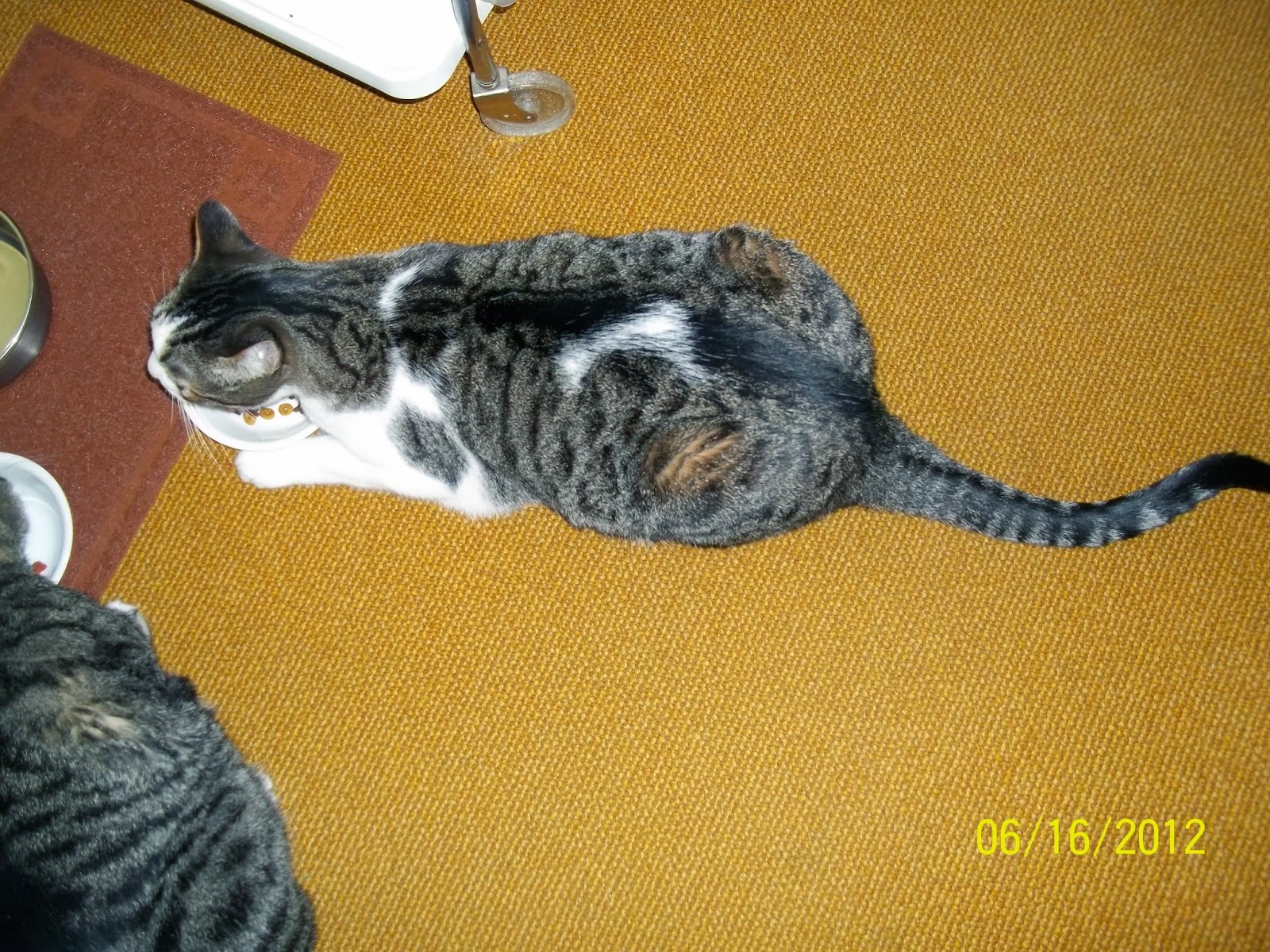Found this site http://www.purinaone.com/cats/cat-journal/activities/feeding-hydration and discovered some interesting facts about the way cats eat that I hadn't thought about before. Last week, we discussed smaller, more frequent meals, and choices of food. Today, we'll deal with bowls and their placement. Just as a review, you remember it was suggested that feeding both wet and dry food is a good idea. Purina One agrees. Here are their thoughts.
"It’s wonderful if you’re already feeding wet food and dry kibble as
part of your feeding regimen. If not, here’s why you should consider
it. In the wild, cats get to experience a variety of tastes and textures and derive much of their hydration from their prey. That’s why we believe wet and dry foods are better together. Dry
kibble mimics the crunch of prey and helps keep teeth clean. Wet food
has a protein and moisture content that’s close to a cat’s natural diet."
They also have activities to show you how to introduce wet food into your cat's diet which is something I need to do. I've been feeding totally dry food because this one doesn't like wet food.
And this one tries to bury it!!
Hummm. This might be an ongoing project for quite a while.
Now on to the interesting part I hadn't thought of. Sammy, the feral cat, displays some of these behaviors which now make sense.
Cats
use their whiskers to navigate their environment by measuring the width
of openings to determine if it’s wide enough to pass through. This is
especially helpful at night. In addition, cats in the wild are constantly aware of what's going on
around them in order to detect rivals or predators. And when cats eat,
they tend to crouch. This posture brings their head closer to their
eating surface – usually a flat rock, fallen tree or ground.
If your current bowl has tall, straight sides or is more square than
round, you may notice an air of discontent at feeding time. The reasons?
Experts note you’ll see hesitation, even pacing around her bowl over
the discomfort of whisker stress – an annoying sensation that’s caused
when the whiskers rub up against the sides of the bowl.
Size of the bowl seems to be okay, so maybe it's the location:
You might also observe nervousness caused be an inability to see
who’s approaching. Or the frustration brought on by not being able to
extract food that’s stuck in the crannies of the bowl where the base and
the walls meet. If you find more mess than usual around your feeding
location or food left behind are other signs that something may be off.
If you're using a bowl with steep sides, it's time to make a change.
When choosing where to place your cat’s feeding dish, it's important to understand the pressures of feeding in the wild. Active hunters know the value of food, so they stay alert for rivals coming in to steal a hard-earned meal. Also know that cats are quite vulnerable to predators while eating.
So they seek locations where they feel protected from the back or flank,
but can still keep a watchful eye on anything approaching as they eat.
Yup, I think I need to change the location where they eat because their backs are to the traffic going through the kitchen.
Was this information helpful to you? Would love to read your comments and hear of your experiences!
Marion Lovato is the author of Sam, the Superkitty, which is available on Amazon in Kindle and paperback.
http://www.amazon.com/gp/product/1604588667



Nicce post thanks for sharing
ReplyDelete